DECEMBER 2021
The atmosphere – its effects on planetary observing and imaging
[This is just one of many articles in the author’s Astronomy Digest.]
As theangular sizes of the planets is measured in arc seconds, observing them is greatlydetermined by how good the ‘seeing’ is – a measure of how much the atmosphere is distorting the images.
Long Range Effects
The atmosphere is made up of cells of differing refractiveindex whose effect is to act like prisms deflecting the light which, as they passacross the line of sight, make the image of a star move about. At most observing sites in the UK the atmosphericcells usually range from about 4 to 8 inches in diameter but they can varytremendously in size – perhaps up to 15 inches in diameter at the Very LargeTelescope in Chile.
If the telescope aperture is equal or less than the cell sizethe image moves around but, when a single cell is in the line of sight, theimage will be sharp so one will have brief periods when planetary details canbe seen.
[The technique called‘lucky imaging’ takes many very short exposures then selects the sharpestimages which are aligned and stacked to provide high quality images.] But, if the telescope aperture is larger thanthe cell size, the images from adjacent cells will overlap and blur the image (thoughit will appear steadier). So, if the seeingis not that good, a smaller aperture telescope may well let you see more detail. If one has a large aperture telescope, onecan sometimes observe better detail by reducing the effective size of a largeaperture by using a sub aperture mask.
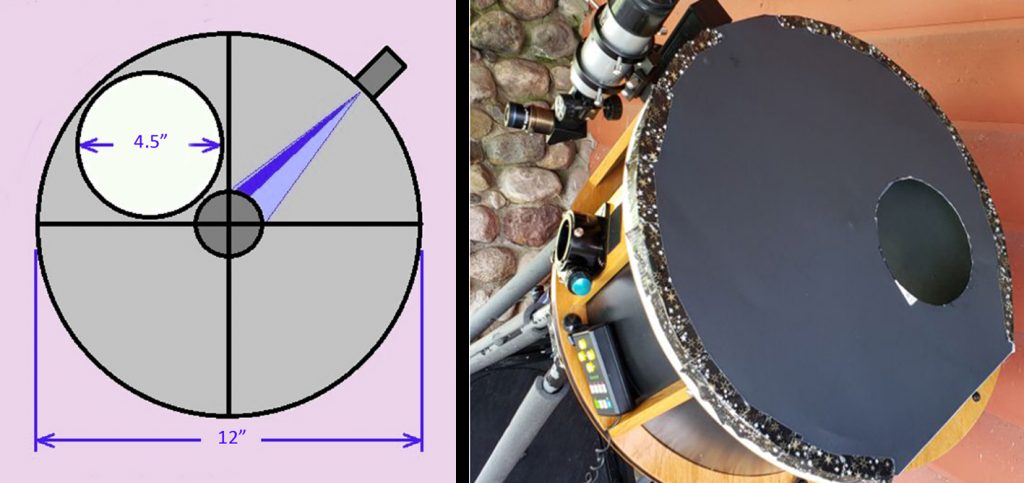
A measure of the‘Seeing’
If a long exposure – say 1 second – is taken, a blurredimage of a star will result which will depend on the amount by which thestellar image is moving around during the period of the exposure. The stellar image may then have a Gaussianshape and the seeing is measured by taking the width in arc seconds at half themaximum brightness. This is called the‘Full Width at Half Maximum’, FWHM.
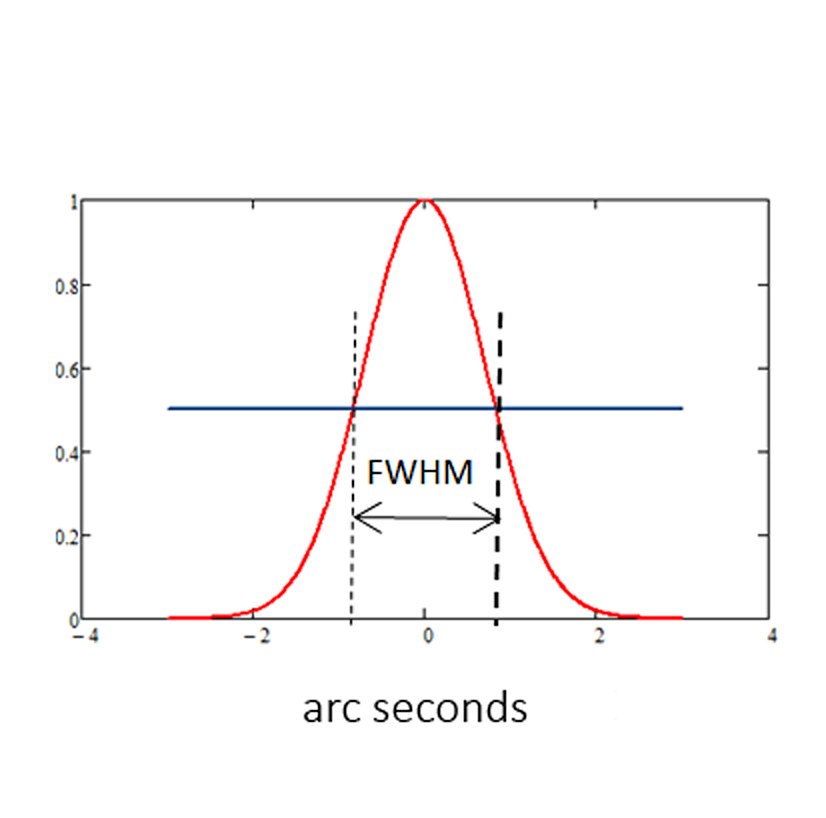
The ‘Pickering Scale’ is a measure of the seeing based on the FWHM of stellar images, ranging from 10, essentially perfect stellar images, to 1, when the seeing is exceptionally bad.

p1. Star image is usually about twice the diameter of thethird diffraction ring if the ring could be seen; star image 13″ indiameter.
p2. Image occasionally twice the diameter of the third ring(13″).
p3. Image about the same diameter as the third ring(6.7″), and brighter at the centre.
p4. The central Airy diffraction disk often visible; arcs ofdiffraction rings sometimes seen on brighter stars.
p5. Airy disk always visible; arcs frequently seen onbrighter stars.
p6. Airy disk always visible; short arcs constantly seen.
p7. Disk sometimes sharply defined; diffraction rings seenas long arcs or complete circles.
p8. Disk always sharply defined rings seen as long arcs orcomplete circles, but always in motion.
p9. The inner diffraction ring is stationary. Outer ringsmomentarily stationary.
p10. The complete diffraction pattern is stationary.
On this scale 1-2 is very poor, 3-4 is poor, 5 is fair, 6-7is good, 7-8 very good, and 8-10 excellent.
Some examples
The Hubble Space Telescope 0.1 arc seconds
Mountain in Chile 0.4 arc seconds
Good Earth Site 1 arc second
Typical Location 2-3arc seconds
Ways to try and estimate whether seeing is going to be good or not
The twinkling ofstars
A quick test of the seeing is to simply observe the stars. If, when at high elevation, they are twinkling quickly the seeing will not be good but, if they twinkle little and slowly, the seeing should be better – but beware, if the seeing is really bad the twinkling can be so fast that the eye (having an exposure time of ~1/10 second) cannot follow it and the stars will not appear to twinkle.
Ground andtemperature difference
One method is use an infrared radiation thermometer and measurethe sky and ground temperatures. Thereis generally about a 30 degree Celsius difference but if it is as little has 10to 20 degrees this indicates high humidity in the atmosphere and seeing will generallybe better but, on the other hand, the transparency will be poor.
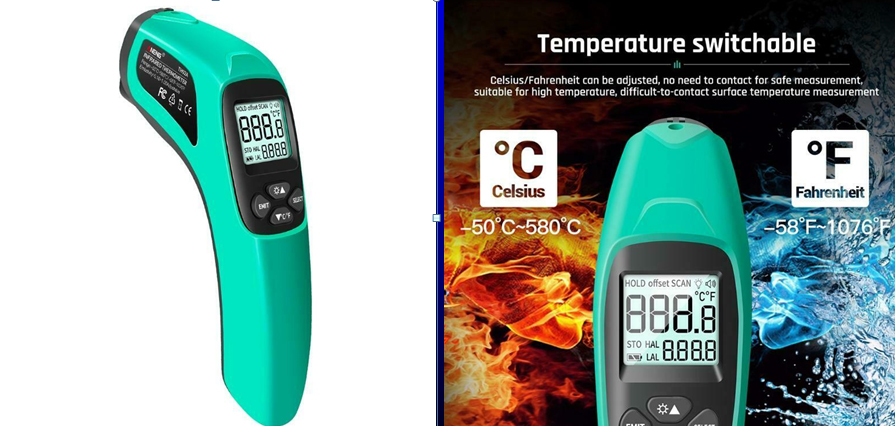
TemperatureInversions
Under normal situations in our atmosphere the temperature decreaseswith altitude but this can invert under certain conditions. When a strong high pressure area stays forlong overhead the temperature above a given altitude can then be greater thanthat found just over the ground and this is then called a thermal inversion. Because convection will have stopped, theground air is not allowed to rise anymore and so the atmosphere will be verysteady providing excellent telescopic images. Unfortunately, this is often accompanied by fog – if it remains faint thereis no real problem but it can easily thicken and might end up completelyobstructing our view.
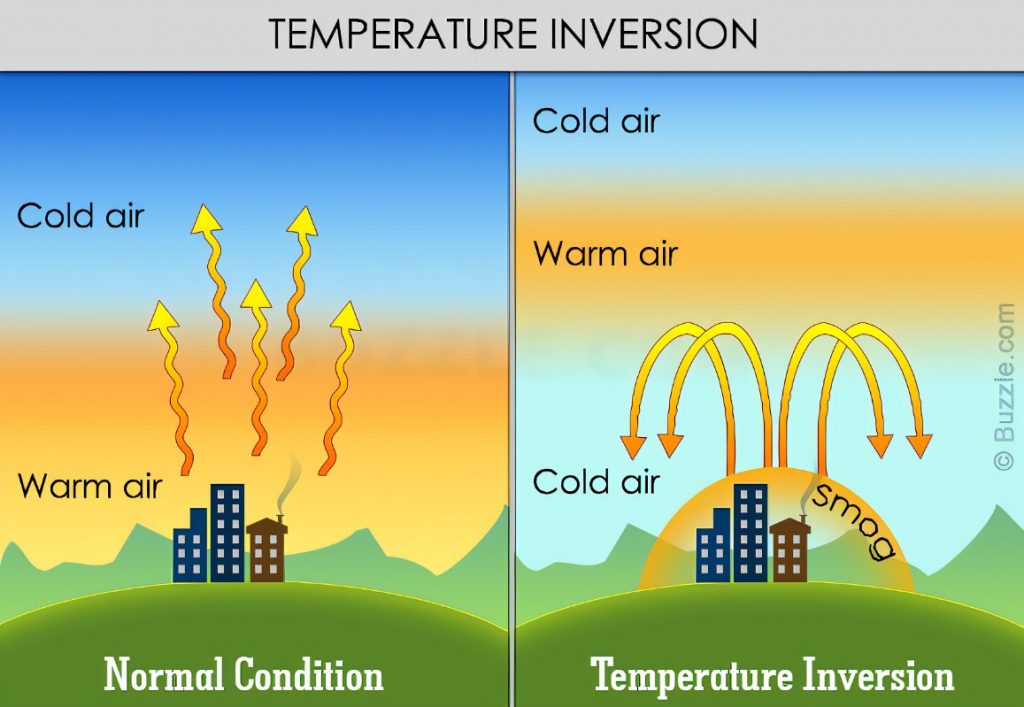
Plane Contrails
Plane contrails at medium heights can be an indication of good or bad seeing. If they’re long and do not break up, this means that the wind speeds are low and even. This could well mean an exceptional observing night will follow but if, on the other hand, the contrails are broken it implies that the winds are uneven or, if short, it implies that the air is cold and the humidity is low so seeing will not be good. However, low humidity air has a high transparency and so good for observing deep sky objects.
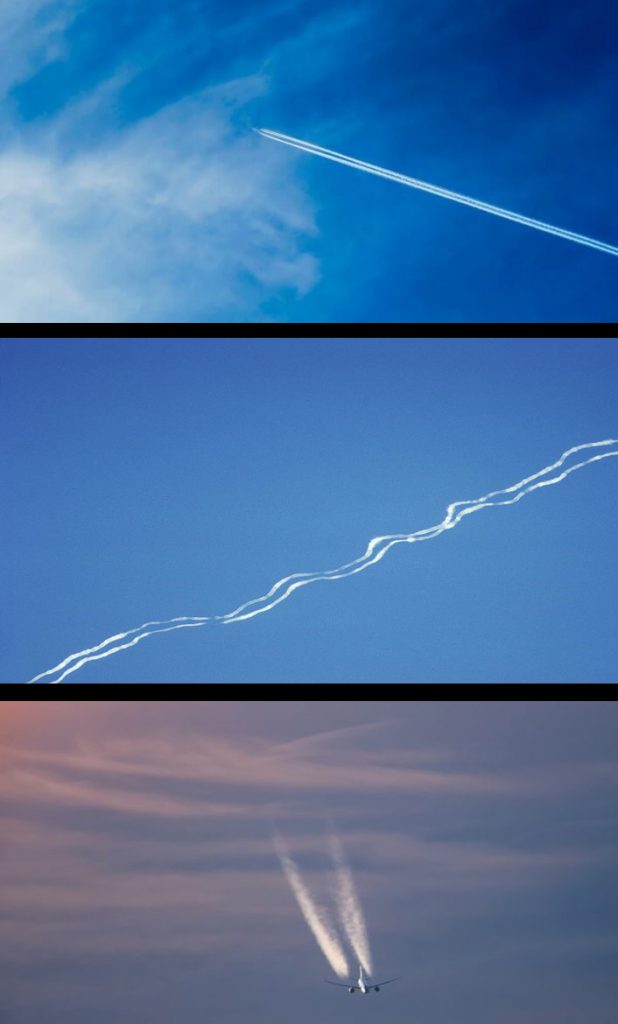
Weather Charts
We can look at weather charts; following a cold front the airis likely to be turbulent but preceding one the air is warmer and more stable.
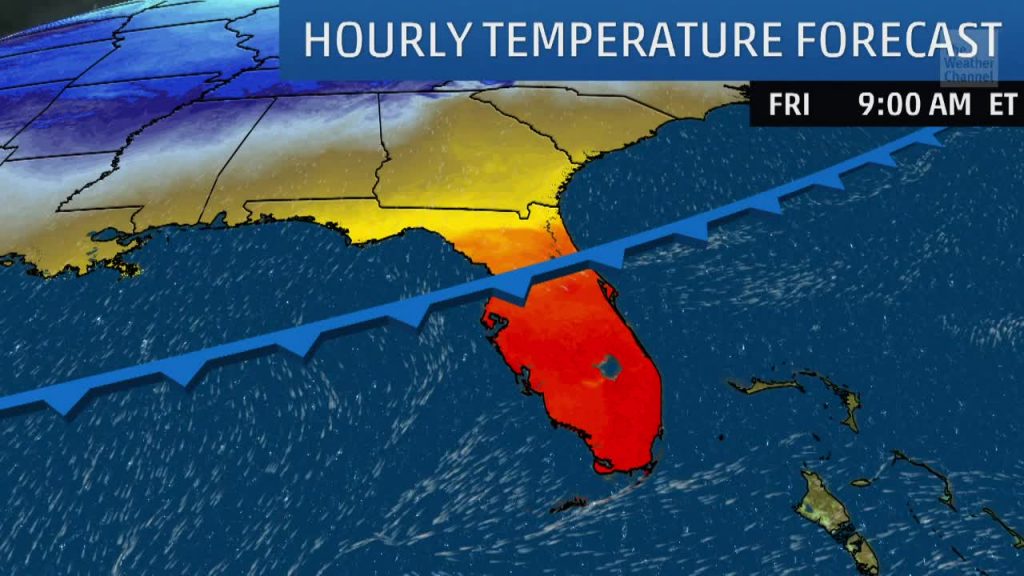
Cloud types and shape
Following cumulus clouds in the daytime, the seeing will bepoor for several hours after sunset. Lightwinds and high altitude linear cirrus clouds indicate good seeing conditions.
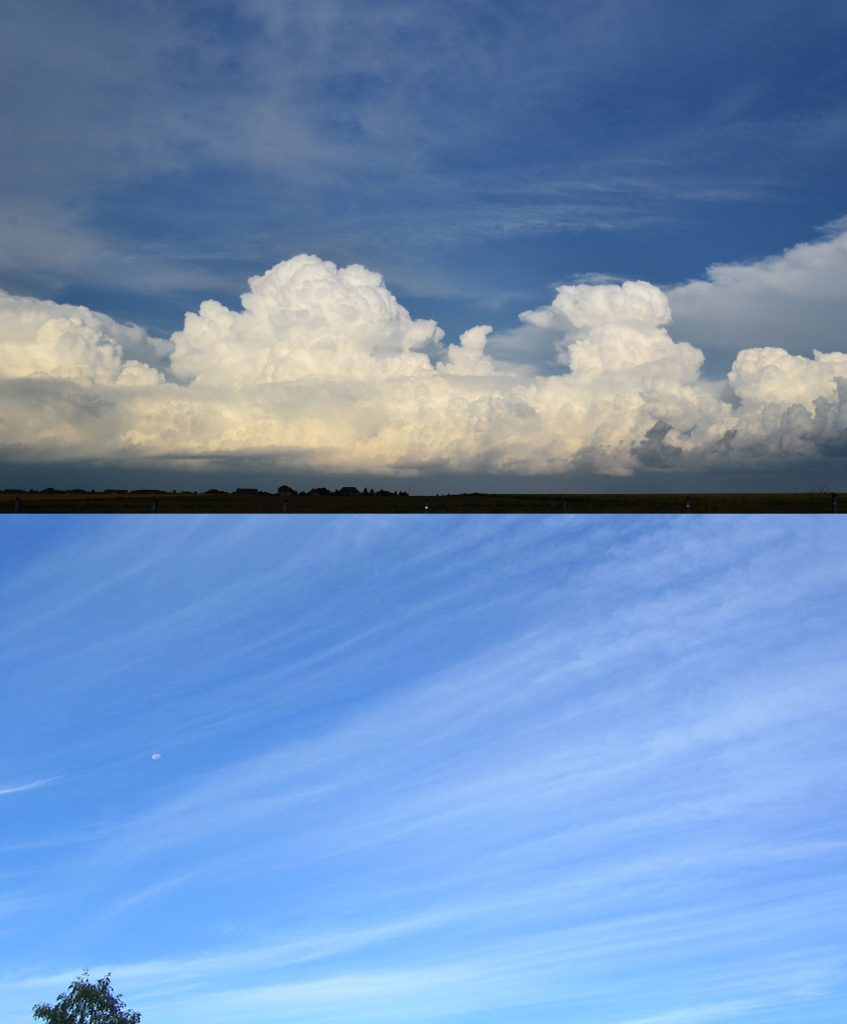
Wind direction
The wind direction plays a part; if the air comes from the north is called ‘polar maritime air’ which can be very turbulent so not so good for planetary observing but if the air comes from the South and there is high pressure it will provide better seeing conditions.
The Jet Stream
Web programmes allows one to observe the wind speeds atdiffering heights and the height to look for is around 9,000 metres which isessentially observing the height of the jet stream. When the jet stream lies overhead, the seeingwill usually be bad.
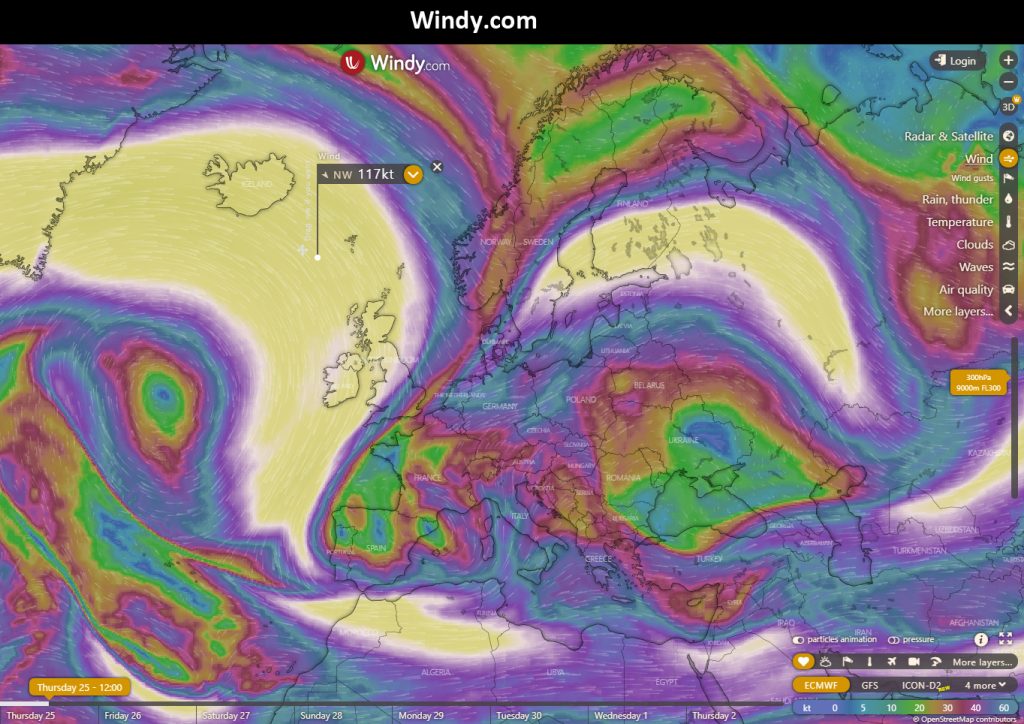
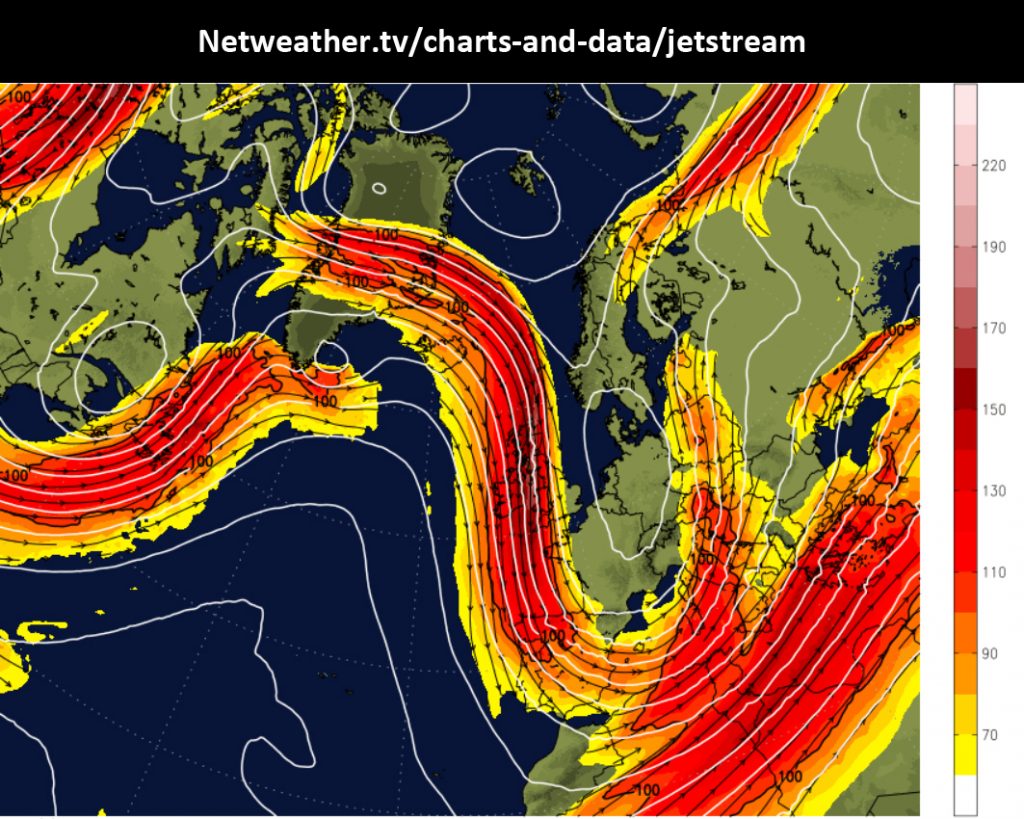
Meteoblue – apredictor of the seeing, jet stream speed and humidity
This excellent website has a section related to atmosphericseeing.
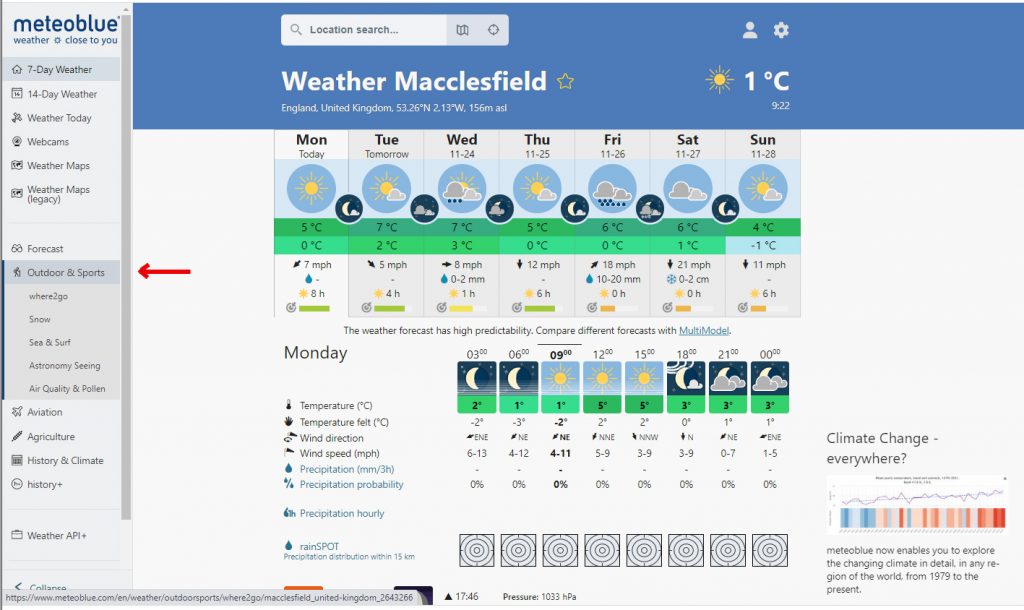
This gives an estimate of the seeing in arc seconds, the jetstream speed overhead and also the relative humidity.
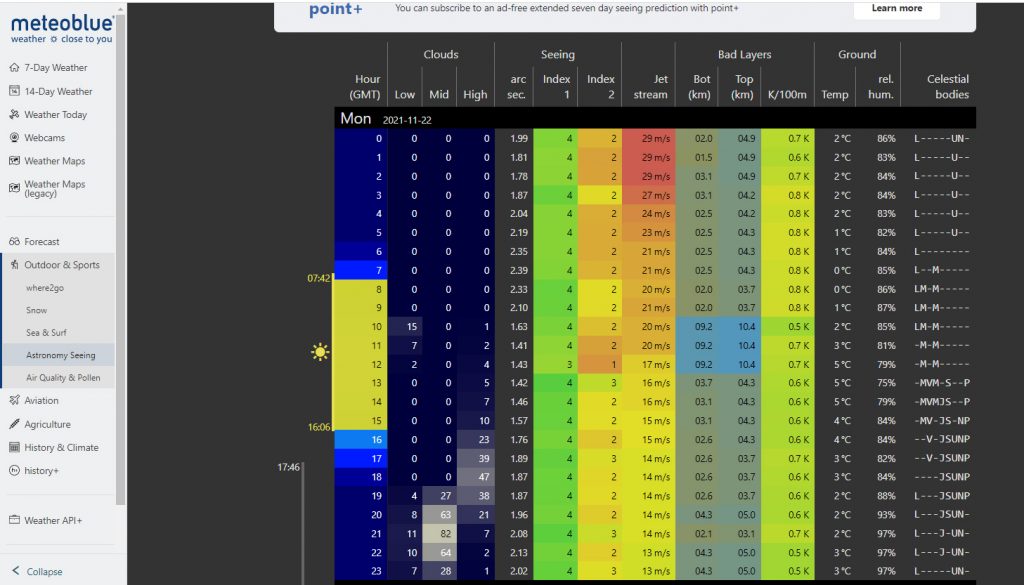
Observing location
The wind flowing across sea or flat land before hills maywell give a fairly linear air flow makingfor excellent observing conditions but, as the air flows over the top of hills,on their further side the air tends to become turbulent and the seeing will notbe so good. Locations in the UK suchas South Pembrokeshire, Cornwall, andthe Isle of Wight and could well be good. Looking at a topographic chart one can see there’s quite a large flat area,called the Fens, south of the wash which could indicate that somewhere likeKings Lynn on the wash could be a good location.
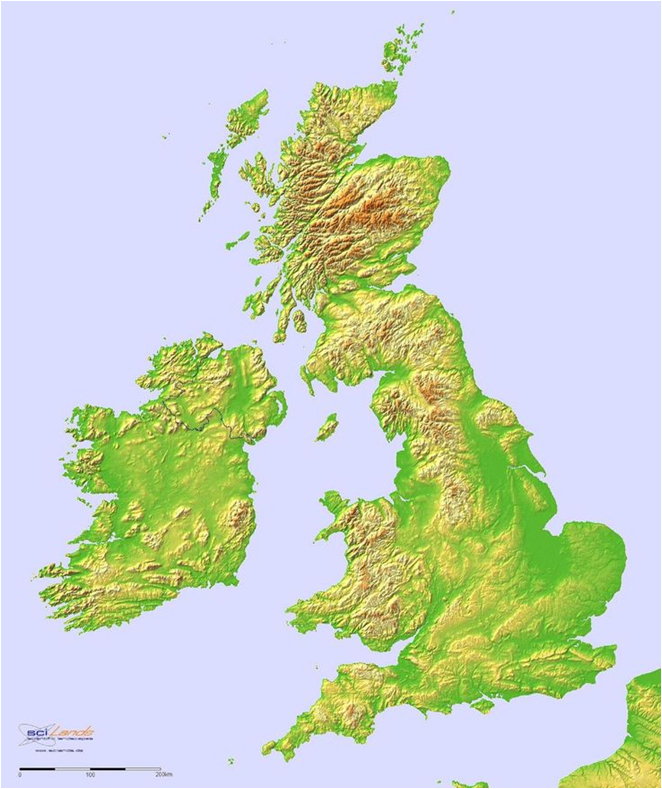
In fact there is a very nice article on atmospheric seeing written by Damian Peach who spent some years in Kings Lynn who found that on around one third of clear nights had ‘good to excellent’ seeing. There is some proof of this as seen in his lovely image of Jupiter using a 14 inch Celestron Schmidt-Cassegrain from Kings Lynn in 2013 when Jupiter was far higher in the sky (about 65 degrees elevation) than it is at the present time. So it does show that even in the United Kingdom one can, at times, take wonderful images of the planets.
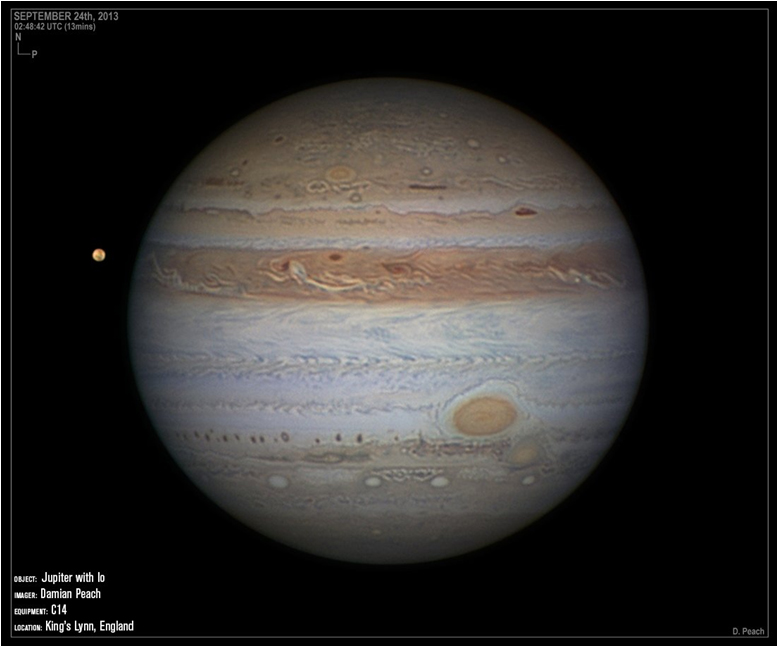
Near ground effects
Near the ground the atmosphere tends to beturbulent caused mainly by areas of houses and other buildings of varyingdensity radiating heat which result in local convection currents. The Sun heatsthe ground and buildings during the day and the heat is then radiated awayduring the night. Fields of grass orlarge bodies of water are good sites to observe from, asthey radiate the heat stored during the day more slowly and equally. One of the world’s top Solartelescopes − the Big Bear Solar Observatory − rises out of a lake so that it isalmost totally surrounded by water in order to minimise any local thermaleffects. An obvious piece of related advice is that when observing theplanets, particularly in winter, is not to observe them over rooftops as theturbulence caused by the escaping heat will severely degrade the image.
Observatories
A problem with observatories is that they can trap heat during the day and release it during the evening and night so that the telescope is looking through turbulent air until its interior has cooled down to ambient temperature. It is said that Roll on – Roll off observatories are better in this respect. One can use a fan to circulate outside air through the observatory during the day to help mitigate this effect. A mount located in a garden without an observatory (covered, of course, unless it is in use) can actually be better but is by no means so convenient to use at it will require both setting up prior to observing and taking down at its end.
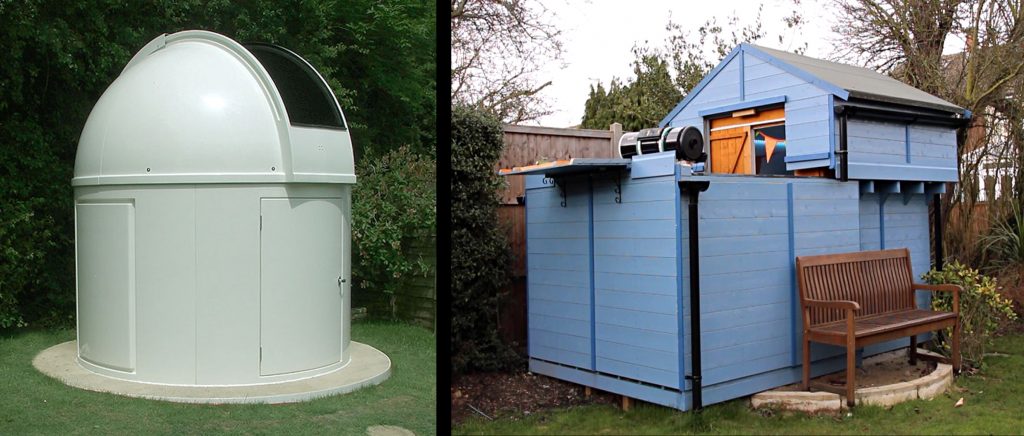
Tube Currents
If the interior of the telescope tube is warmer than the ambient temperature, air current inside will distort the images and an out-of-focus star may appear to be ‘bleeding’.
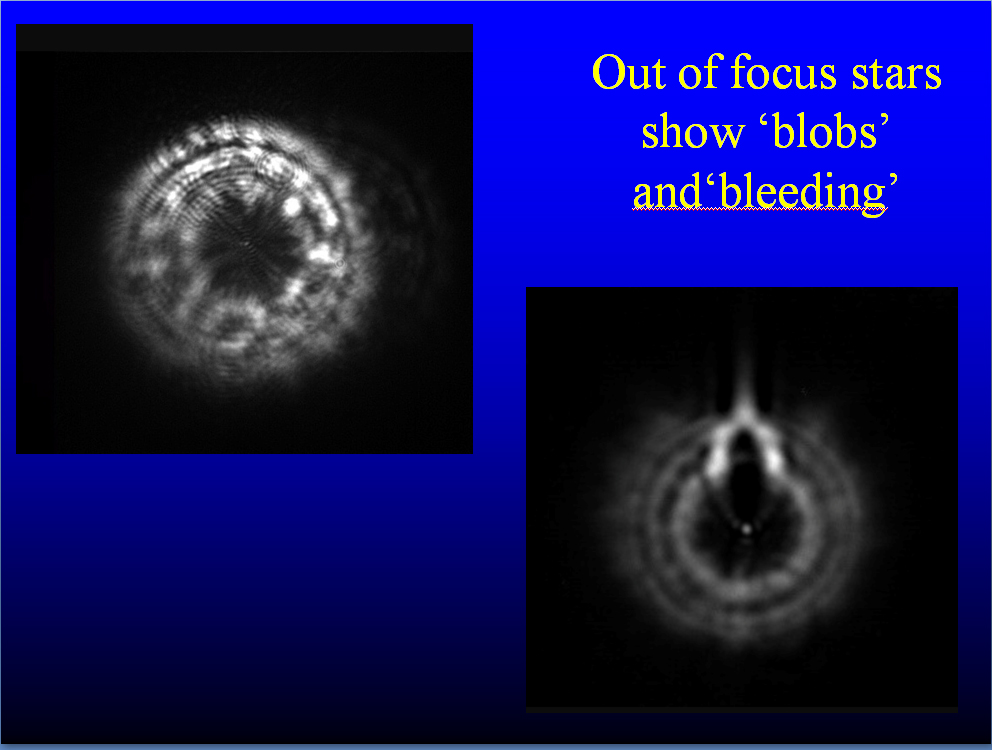
In refractors, the light travels down the tune assembly just once, in Newtonians twice and Catadioptric telescopes three times making the effects of tube currents greater.
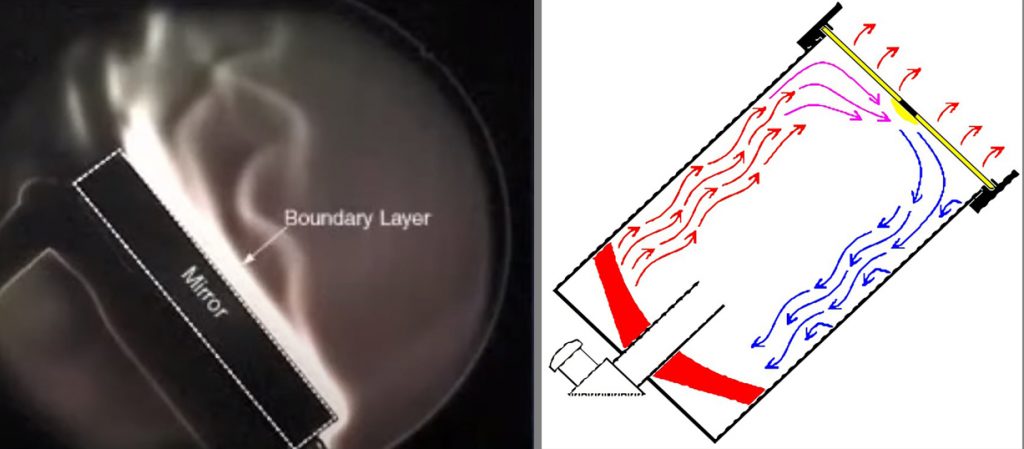
Closed tube telescopes such as Schmidt-Cassegrains and Maksutovs will require a longer cool down period than Newtonians or Cassegrains. So some advice: keep telescopes in a cool (but not damp) location and bring outside some hours before observing and imaging. It is possible to buy a device such as the Lymax SCT cooler to inject filtered air into the interior of a Schmidt-Cassegrain as seen below. It is best to keep these inside a sealed plastic bag when not in use and switch on the fan for a short while before inserting into the telescope to remove any dust.
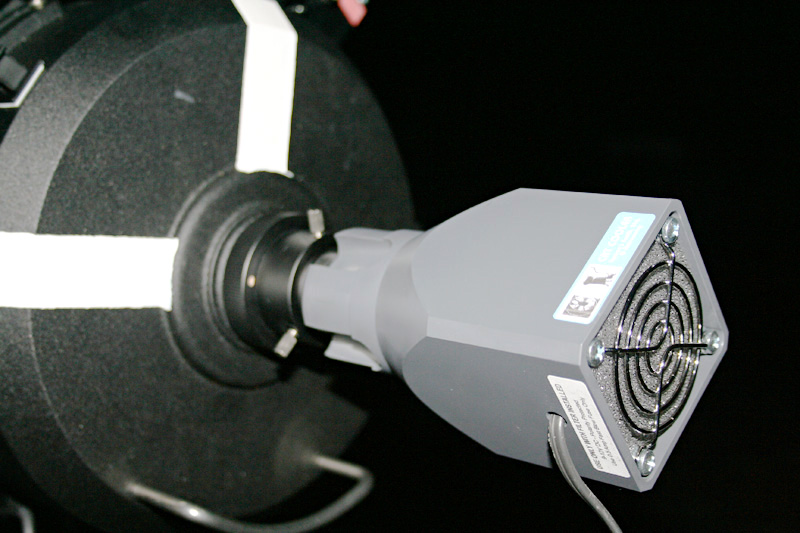
An example of groundeffects – a ‘Tale of two Scopes’
When Mars was closest to the Earth in August 2003, the Macclesfield Astronomical Society held a star party at Jodrell Bank and quite a number of telescopes were set up to observe it. As the evening progressed a consensus arose that two scopes were giving particularly good images: my own FS102, 4-inch Takahashi Fluorite Refractor (at around £2,500 pounds with its mount) and an 8-inch, f/6, Dobsonian Newtonian newly bought for just over £200. (Current prices in the image below.) I personally preferred the view through the f6 Newtonian but others though that the, f/8.1, FS102 gave a slightly better image so we will call it a draw.
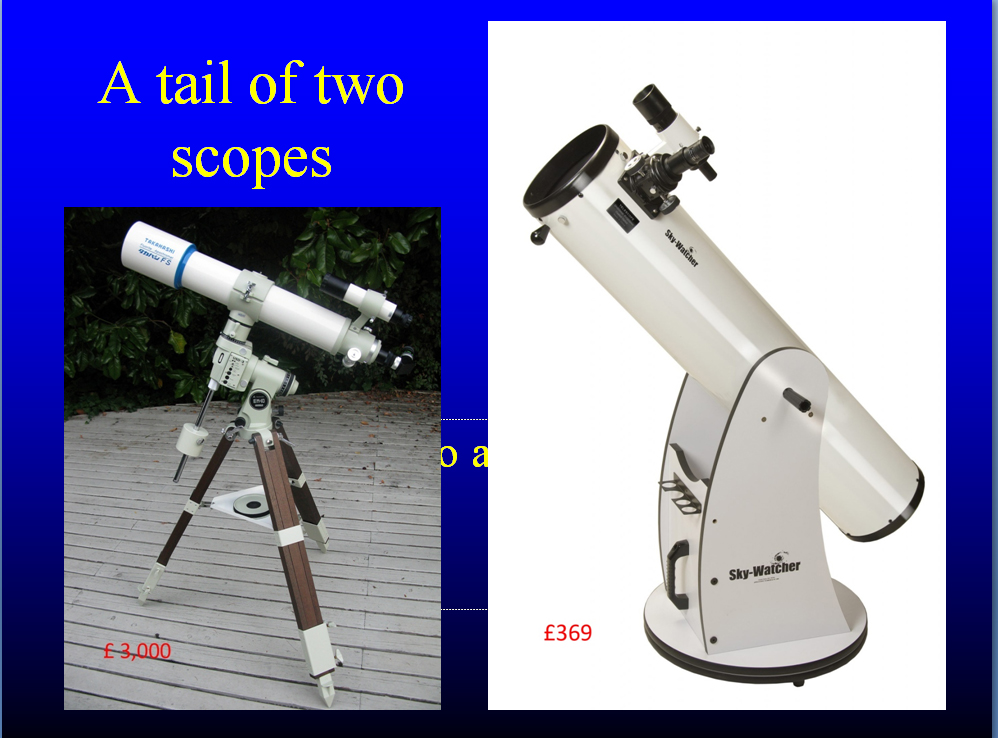
The majority of scopes had been set up on a largeconcrete patio outside our visitor centre providing an excellent flat surface,but the FS102 and Dobsonian were on grass and not observing over thepatio. This, I believe, was the major reason why these two scopes hadperformed so well. During the day (remember it was August) the concretewill have absorbed heat which is then released during the evening causinglocalized air turbulence through which the scopes mounted on the patio wereviewing Mars. It is not therefore surprising, that the two mounted ongrass should perform better. [A related point: one does not have to spendlarge amounts of money to obtain exquisite views of the heavens!]